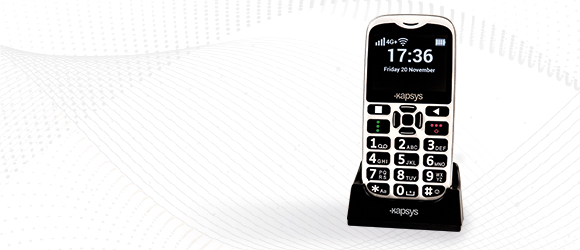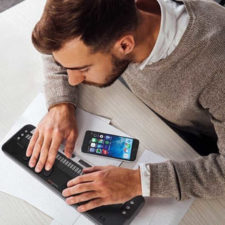Screen Readers for the Blind: Accessing Content Without Barriers
Screen Readers for the Blind: Accessing Content Without Barriers
Blog Article
Discover Cutting-edge Devices Created for the Visually Impaired
The growth of cutting-edge devices for the aesthetically damaged represents a substantial development in accessibility and freedom. Technologies such as wise glasses with AI capabilities and mobile applications created to supply auditory summaries are improving day-to-day experiences for individuals.
Smart Glasses for Navigation

Smart glasses created for navigating are changing the way visually damaged people engage with their environment. These sophisticated devices make use of a mix of electronic camera modern technology, expert system, and auditory comments to give real-time information regarding environments. By utilizing challenge discovery systems, clever glasses can notify customers to possible threats, enabling much safer wheelchair in both acquainted and unfamiliar settings.
The integration of GPS innovation additionally boosts navigation capabilities, permitting users to get acoustic directions as they move. This hands-free strategy not only cultivates freedom yet also encourages aesthetically damaged individuals to navigate metropolitan landscapes with raised confidence. Furthermore, several smart glasses are geared up with features that recognize landmarks and road signs, giving contextual info that enhances the individual experience.
Moreover, the advancement of these devices is consistently progressing, with business working to enhance the precision of item recognition and expand the array of navigational features. As clever glasses come to be extra easily accessible and cost effective, they hold the potential to considerably transform life for visually damaged users. Ultimately, these cutting-edge tools stand for a vital action toward inclusivity, offering improved movement and a higher feeling of autonomy for individuals navigating the world around them.

Mobile Apps for Daily Living
Exactly how can mobile applications enhance the every day lives of aesthetically impaired people? Mobile apps are transforming the means visually damaged individuals navigate their settings, manage day-to-day jobs, and access details. These applications offer crucial assistance through numerous performances, promoting independence and boosting lifestyle.
Numerous ingenious mobile applications are created specifically for day-to-day living. Applications like Be My Eyes connect aesthetically impaired customers with sighted volunteers through video phone calls, allowing them to receive real-time assistance with jobs such as reading tags or browsing unknown areas. Seeing AI, established by Microsoft, utilizes artificial knowledge to describe surroundings, reviewed message, and identify items, successfully changing a smart device into an effective tool for daily assistance.
Additionally, navigating apps tailored for the visually damaged, such as Aira and BlindSquare, use audio-based instructions and ecological details, allowing individuals to traverse their surroundings securely and with confidence. Beyond navigation and immediate assistance, mobile applications additionally support organization and task administration, with functions that aid users set suggestions, develop order of business, and track appointments. In recap, mobile applications act as indispensable resources, equipping aesthetically damaged people to lead more independent and fulfilling lives.
Wearable Technologies for Support
Empowerment via modern technology is increasingly evident in the world of wearable devices designed to help visually impaired individuals. These ingenious tools incorporate seamlessly right into life, boosting navigating and giving vital responses to individuals. Wise glasses geared up with video cameras can check out and recognize faces text aloud, allowing customers to engage more with confidence in specialist and social setups.
An additional notable advancement is using haptic responses systems in wearable tools. These systems use vibrations or other responsive signals to communicate information concerning the customer's setting, such as challenges or modifications in terrain, enhancing mobility and safety. Wearable modern technologies likewise consist of wristbands that attach to smartphones, informing individuals to alerts through subtle vibrations, thus boosting connectivity without reliance on aesthetic cues.
As these modern technologies continue to evolve, they are not only improving independence for visually impaired individuals however likewise promoting a higher sense of inclusion in society. By linking the space between obstacles encountered in day-to-day living and the potential for freedom, wearable innovations work as crucial devices in the quest for equal rights and empowerment for those with visual disabilities.
Sound Description Tools
Audio description tools play an important duty in improving access for aesthetically impaired people, supplying them with the ability to engage with visual media. OCR devices for the blind. These tools offer narrated descriptions of key visual elements in films, tv shows, and live performances, making sure that individuals can completely comprehend the context and feelings shared through visuals
Audio description can be integrated right into various systems, including streaming solutions, cinema testings, and live cinema. Many popular streaming solutions now consist of audio summary as an availability function, allowing audiences to select it quickly. In enhancement to traditional media, specialized apps likewise exist, providing audio summaries for art events, museums, and other social events.
The efficiency of audio summary pivots on the skill of the narrators, that have to communicate visual information succinctly without interfering with the original sound. Technologies in this area are additionally paving the means for even more individualized experiences, where individuals can readjust the degree of detail and pacing according to their choices.
Braille Innovations and Gadgets
Braille innovations and devices have actually dramatically changed the method aesthetically impaired individuals communicate with text and information. Modern developments have resulted in the advancement of versatile tools that enhance proficiency and freedom amongst individuals. Significantly, Braille show innovations have developed, permitting vibrant analysis experiences. These gadgets convert electronic text into Braille, enabling users to access a substantial variety of info on computer systems, tablets, and smartphones.
Additionally, mobile Braille notetakers integrate traditional Braille input with modern-day functionalities, facilitating note-taking, organizing, and paper editing on the move. Assistive technology for the blind. These small tools frequently include text-to-speech capabilities, connecting the space between Braille and acoustic information
On top of that, cutting-edge Braille printers have emerged, enabling customers to produce Braille labels, papers, and educational products effectively. This accessibility promotes better participation in academic and professional settings, ultimately promoting inclusivity.
Moreover, study right into clever Braille modern technologies remains to expand. Gadgets that include man-made intelligence are being discovered to give real-time navigation help and contextual info, boosting the individual experience in diverse settings. On the whole, these developments mirror a dedication to encouraging visually damaged individuals through modern technology, ensuring they can easily access and engage with the world around them.

Verdict
The improvement of cutting-edge tools for the visually impaired significantly boosts self-reliance and lifestyle. Smart glasses, mobile applications, wearable modern technologies, audio description tools, and Braille advancements jointly encourage individuals by providing important navigating help, ecological recognition, and improved analysis experiences. These modern technologies not just foster higher addition however likewise advertise autonomy in daily tasks, ultimately contributing to a much more fair and accessible culture for aesthetically impaired individuals. Proceeded growth in this area holds assurance for additional improvements.
As wise glasses end up being more available and budget-friendly, they hold the potential to significantly change Braille displays and notetakers daily life for aesthetically damaged users. Mobile apps are changing the way aesthetically damaged individuals browse their settings, take care of daily jobs, and gain access to information. Applications like Be My Eyes attach visually damaged individuals with sighted volunteers by means of video phone calls, enabling them to obtain real-time help with jobs such as reviewing tags or navigating strange rooms.In addition, navigation applications tailored for the aesthetically impaired, such as Aira and BlindSquare, supply audio-based directions and ecological details, making it possible for individuals to traverse their environments safely and with confidence.The development of cutting-edge tools for the aesthetically impaired dramatically enhances independence and high quality of life.
Report this page